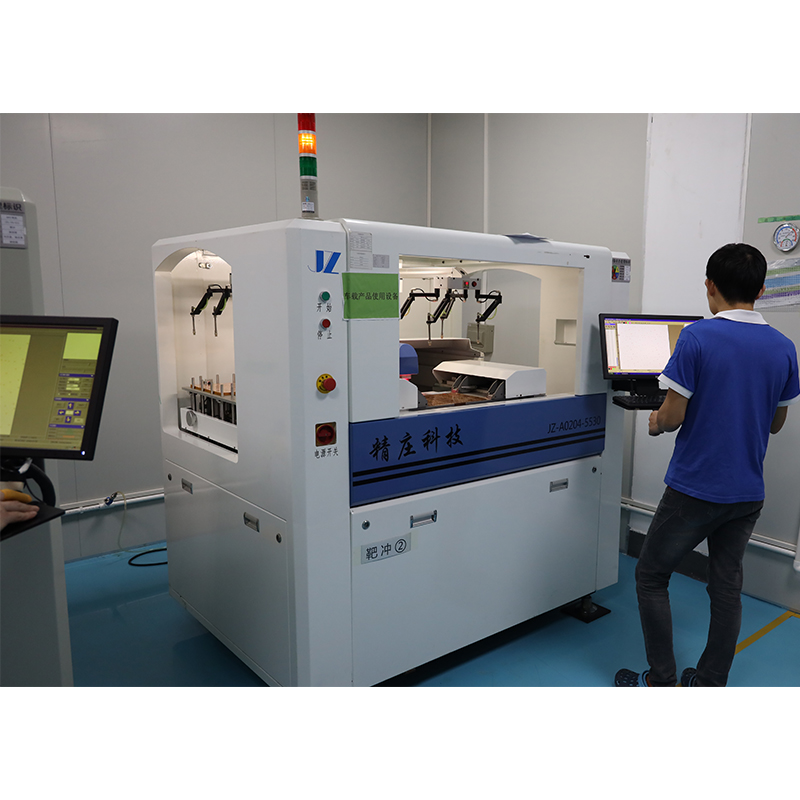Introduction:
In this blog post, we’ll explore some of the key technologies and best practices you can use to ensure the reliability of vias in rigid-flex circuit boards.
When designing circuit boards, reliability is critical. A key aspect that needs to be thoroughly considered is the reliability of vias in rigid-flex circuit boards. Vias play a vital role in establishing connections between different layers of a circuit and ensuring the smooth flow of electrical signals.
Before getting into the details, it’s important to understand the basic concept of vias. Vias are small holes drilled through the insulation of a circuit board to allow electrical connections between different layers. In rigid-flex circuit boards that combine flexible and rigid substrates, the vias must be designed to withstand the stresses and strains associated with bending and flexing.
To ensure the reliability of vias in rigid-flex circuit boards, here are some basic considerations:
1. Correct via placement:
The location and distribution of vias is critical to maintaining reliability. It is important to place vias in areas of the circuit with minimal bending and flexing. This helps reduce stress on the vias and prevents them from being damaged during the life of the board.
2. Via size and aspect ratio:
The size and aspect ratio of a via also affects its reliability. Smaller diameter vias are less susceptible to mechanical stress and are more resistant to failure. Additionally, the aspect ratio (the ratio of via depth to via diameter) should be within acceptable limits to prevent problems such as plating voids or cracks.
3. Pad and ring design:
The design of the pad and ring around the via plays an important role in its reliability. Adequate pad and ring dimensions should be maintained to ensure reliable solder joints and proper electrical connections. Undersized pads or rings can cause weak mechanical connections and electrical problems.
4. Use of through holes:
In rigid-flex circuit boards, it is recommended to use through holes instead of blind or buried vias whenever possible. Through holes provide better mechanical strength and electrical connectivity. They also allow for easier testing and inspection during the manufacturing process.
5. Material selection:
Choosing the correct material for a via is critical to its reliability. High-quality materials such as electroless copper or nickel plating (electroless nickel, electroless palladium, immersion gold) can increase the durability and longevity of through-holes, especially in harsh environmental conditions.
6. Thermal management:
Proper thermal management can also enhance the reliability of vias in rigid-flex circuit boards. Strategically placed thermal vias help dissipate heat, minimizing the risk of thermal damage to the board and its components.
7. Comply with industry standards:
Following industry standards and specifications is critical to ensuring via reliability. Standards such as IPC-2223 provide guidance on via design, materials, and implementation. Adherence to these standards ensures compatibility and increases the overall reliability of the board.
8. Strict testing and inspection:
Thorough testing and inspection of rigid-flex circuit boards, including vias, is critical to detect any potential issues prior to deployment. Non-destructive testing techniques such as X-ray inspection can help identify any defects or irregularities in vias so that corrective action can be taken promptly.
By implementing these best practices and considerations, designers can significantly improve the reliability of vias in rigid-flex circuit boards. It is critical to work with an experienced manufacturer and consult with experts in the field to ensure a reliable and robust via design is implemented.
In summary
The reliability of vias in rigid-flex circuit boards is critical and requires careful attention. Through proper via layout, size and design, material selection, thermal management, compliance with industry standards and rigorous testing, circuit board designers can ensure the success and reliability of their projects. Investing time and effort into optimizing through-hole designs will result in better-performing, more durable rigid-flex boards.
Post time: Oct-09-2023
Back







